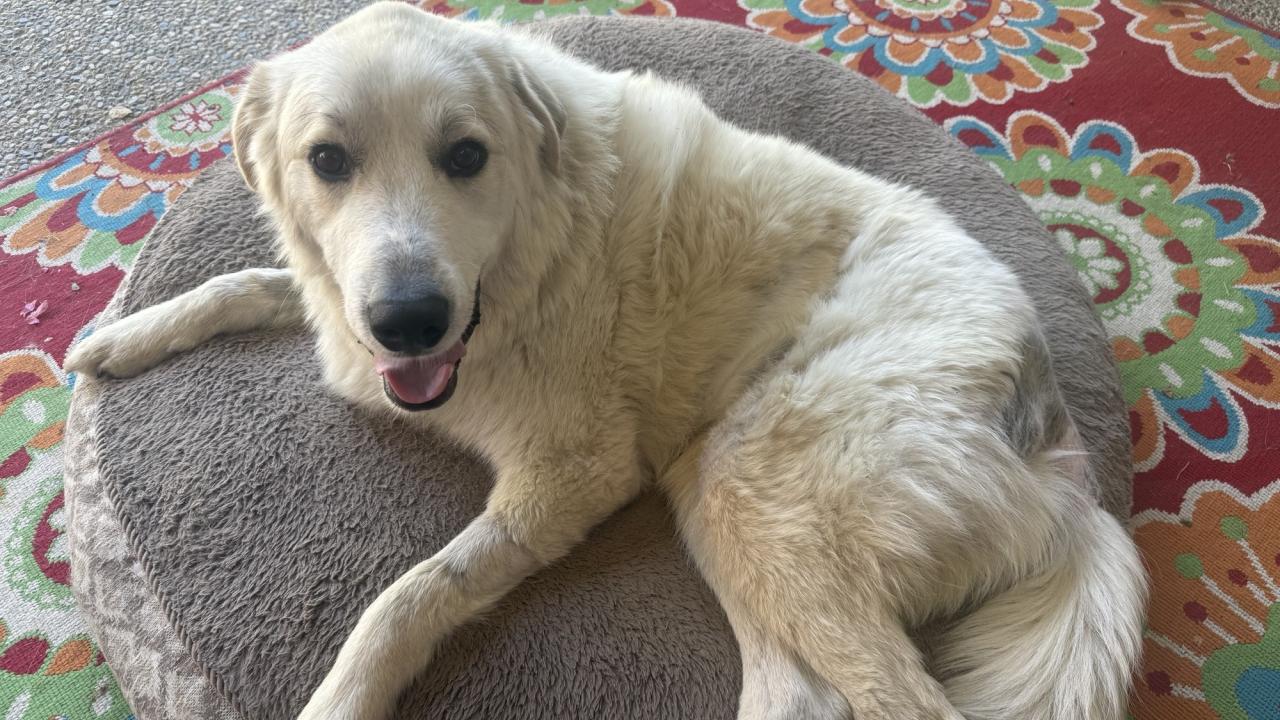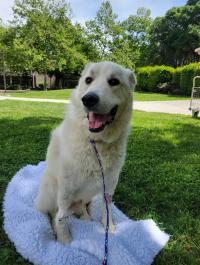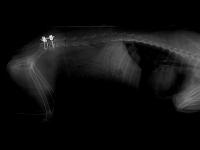
Abandoned Dog Hit by Car Recovers from Back Surgery

When Flynn, an approximately 1-year-old male neutered Great Pyrenees, arrived at the UC Davis William R. Pritchard Veterinary Medical Teaching Hospital (VMTH), he had visible tire tracks across his back leg and abdomen. The City of Stockton Animal Services Center reported he was run over by a car and thrown into a ditch. Knowing Flynn needed specialty care, the Yolo County Spay and Neuter Group agreed to take him and immediately brought him to UC Davis.
Arriving at UC Davis, Flynn was painful and lame in both back legs with neurological deficits in his left back leg. He was received by Dr. Karen Vernau of the Neurology/Neurosurgery Service, who worked with the Anesthesia and Diagnostic Imaging Services to perform an MRI to reveal the full extent of the damage. Flynn suffered a fracture of his L7 vertebra, and a lumbosacral luxation (dislocation of his spinal column) was compressing the nerves causing intense pain in his pelvis and back legs. The next step was for Flynn to receive a CT scan which helped the neurosurgeons plan the surgery to repair the damage to his vertebrae.
Drs. Ji-Hey Lim and Adrien Dupanloup of the Neurosurgical Specialty Service performed a dorsal laminectomy on Flynn, which relieved pressure on his spinal nerves. His L7 fracture was stabilized with a specialized metal implant.

While hospitalized for six days, Flynn slowly improved in his pelvic limb motor function and his comfort. By the time of discharge, Flynn was able to walk out of the hospital without apparent pain. Kelly Stetter, a registered veterinary technician with the VMTH’s Accessible Veterinary Care team, agreed to foster Flynn. He was sent home with oral pain medications, antibiotics, and anti-anxiety medications.
During home care, Stetter kept Flynn on strict cage rest while his surgical site and spine healed, with brief on-leash respites 3-4 times a day. He was not allowed to jump, run, or do any activity involving impact for a few months.
At his one-month recheck appointment, Flynn arrived back at the VMTH with normal nerve function, and he was able to put more weight on his back leg. The lameness in the back left leg improved significantly. While there was some expected decreased muscle mass in both back legs, he appeared comfortable with no signs of pain.
Stetter continues to foster Flynn, and his recovery is headed in the right direction. He will soon begin physical rehabilitation to help improve his mobility and gradually advance him back to full health.
A portion of Flynn's treatment was made possible through the hospital’s Compassionate Care Funds. These donor-supported funds play a vital role in ensuring that animals in our community, including shelter pets and strays, can receive lifesaving care when financial barriers exist. Established through the generosity of compassionate benefactors, these funds reflect the heart of the veterinary school's mission: to make world-class care accessible to all animals in need.
# # #
